📚 Renaissance Literature: Essential Concepts for Reading Comprehension
Renaissance literature refers to the body of written works produced during the Renaissance period (14th to 17th centuries), characterized by a revival of classical learning, humanism, and a focus on individualism. This era marked a shift from medieval traditions to more modern perspectives, influencing art, culture, and intellectual life. RC passages on Renaissance literature often explore themes, key authors, and the historical context that shaped this literary movement. Understanding these concepts enables readers to analyze the transformative impact of Renaissance literature on society and culture.
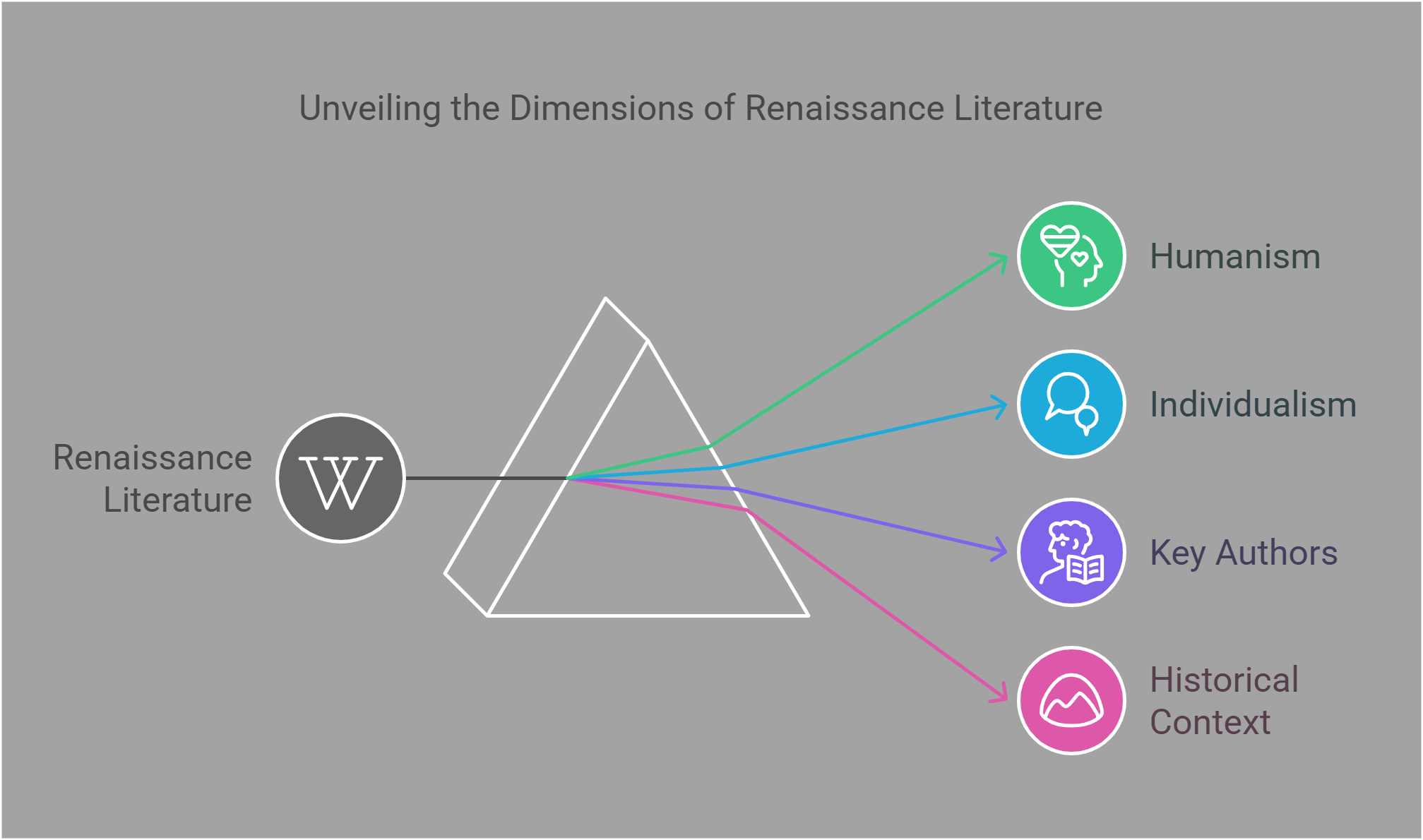
📋 Overview
This guide will explore the following essential Renaissance literature concepts:
- Definition and Historical Context
- Humanism and its Influence
- Key Themes in Renaissance Literature
- Major Genres of Renaissance Literature
- Iconic Authors and Works
- The Role of the Printing Press
- Renaissance Literature Across Europe
- Influence of Classical Antiquity
- Religious and Political Undertones
- Legacy of Renaissance Literature
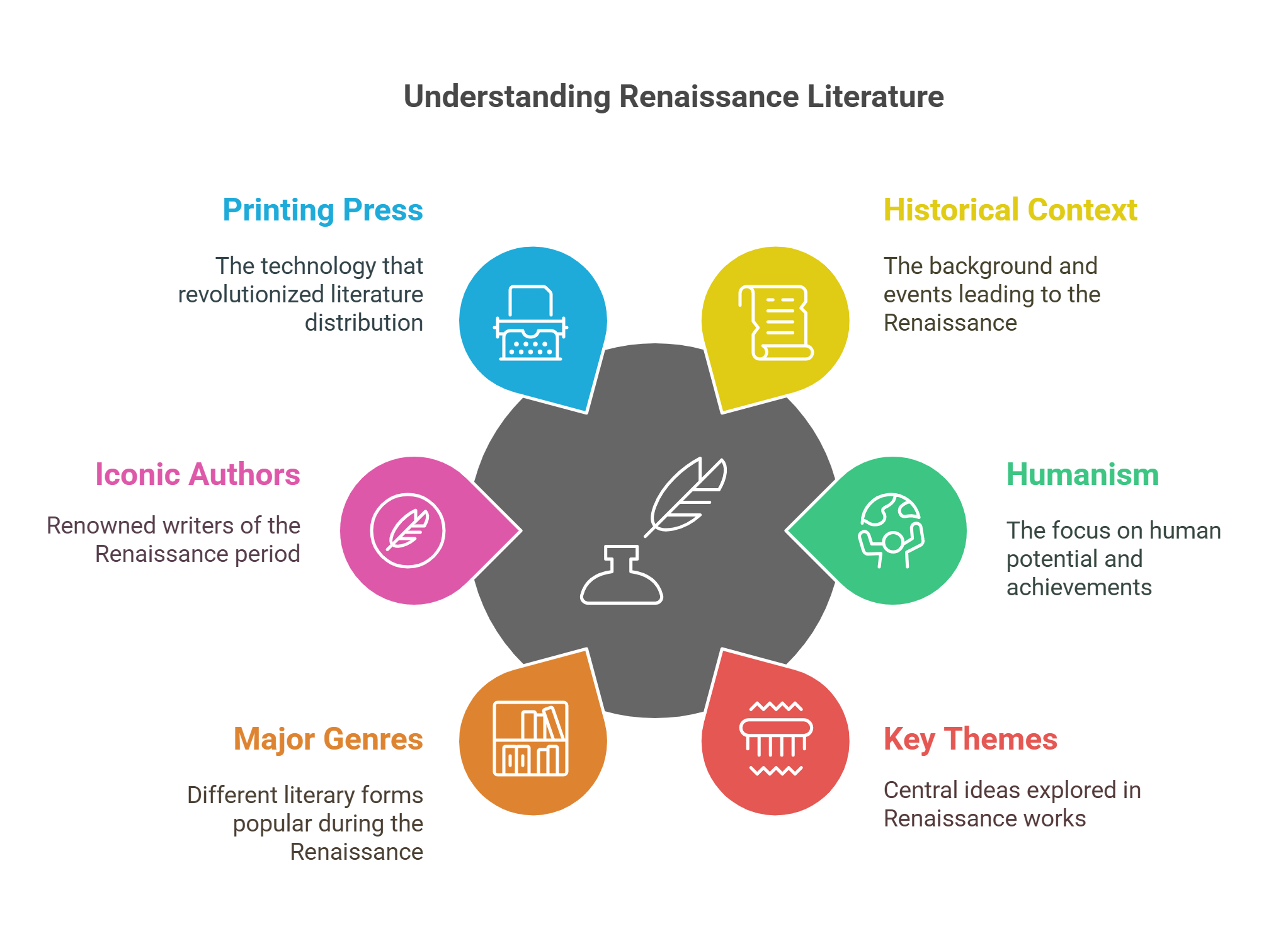
🔍 Detailed Explanations
1. Definition and Historical Context
Renaissance literature emerged during the Renaissance, a period of cultural rebirth in Europe following the Middle Ages. Spanning the 14th to 17th centuries, this era saw a renewed interest in classical antiquity and human-centered themes.
- Historical Milestones:
- Began in Italy with figures like Dante and Petrarch.
- Spread to other parts of Europe, including England, France, and Spain.
- Coincided with events such as the Reformation and the Age of Exploration.
- Social Changes:
- Rise of the middle class and increased literacy rates.
- Patronage of the arts by wealthy families like the Medicis.
📘 Example: Petrarch’s sonnets exemplify early Renaissance ideals of individuality and emotion.
Explained Simply: Renaissance literature is like a bridge between the medieval and modern worlds, reflecting new ideas about humanity and the universe.
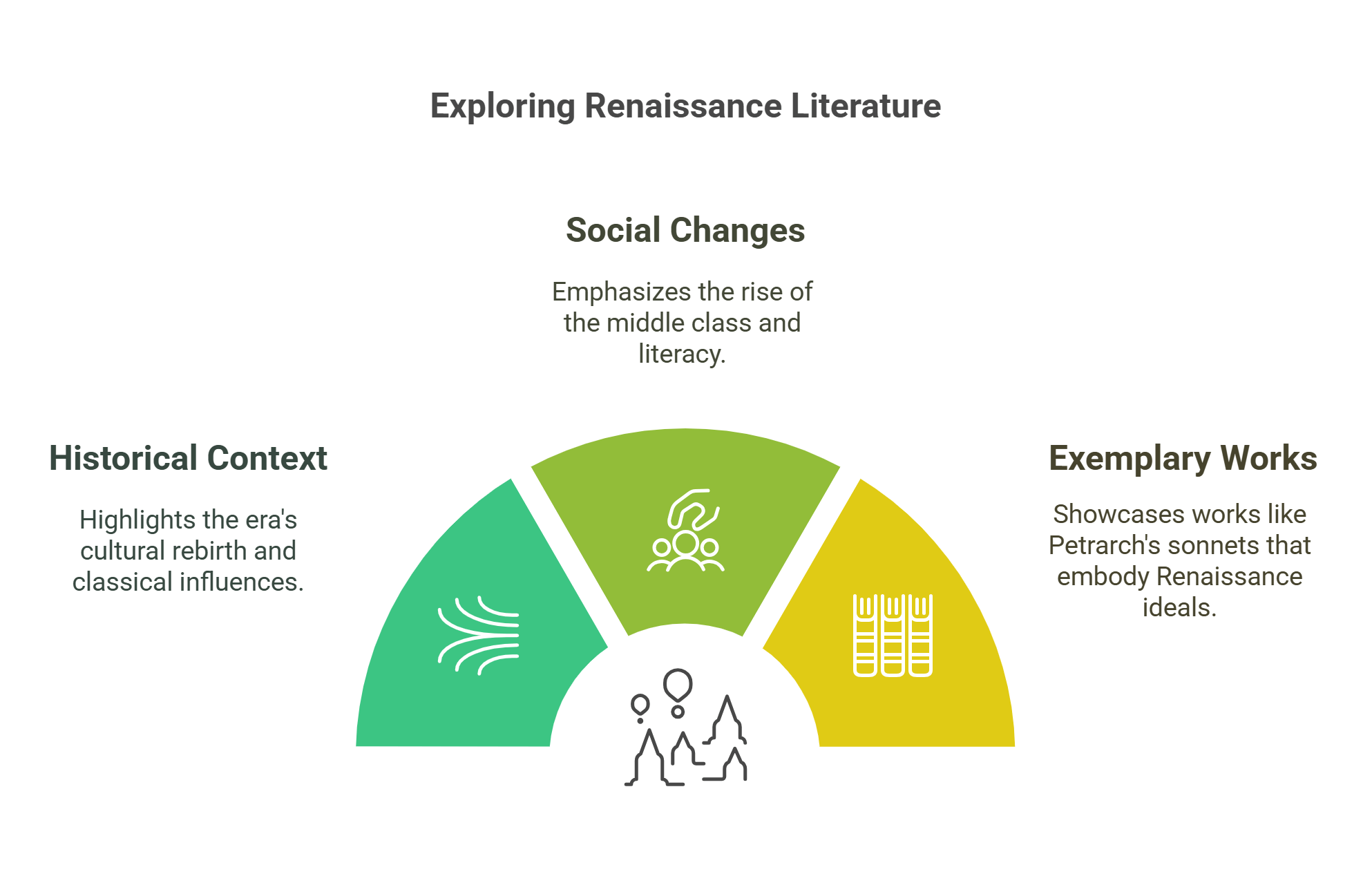
2. Humanism and its Influence
Humanism, a core intellectual movement of the Renaissance, emphasized the study of classical texts and the value of human experience and individuality.
- Core Principles:
- Focus on human potential and achievements.
- Study of subjects like philosophy, history, and literature (studia humanitatis).
- Impact on Literature:
- Writers celebrated human emotion and intellect.
- Shifted focus from religious themes to secular and personal narratives.
📘 Example: Shakespeare’s exploration of complex human emotions in plays like “Hamlet” reflects humanist ideals.
Explained Simply: Humanism is like a magnifying glass on human nature, celebrating our capacity to think, feel, and create.
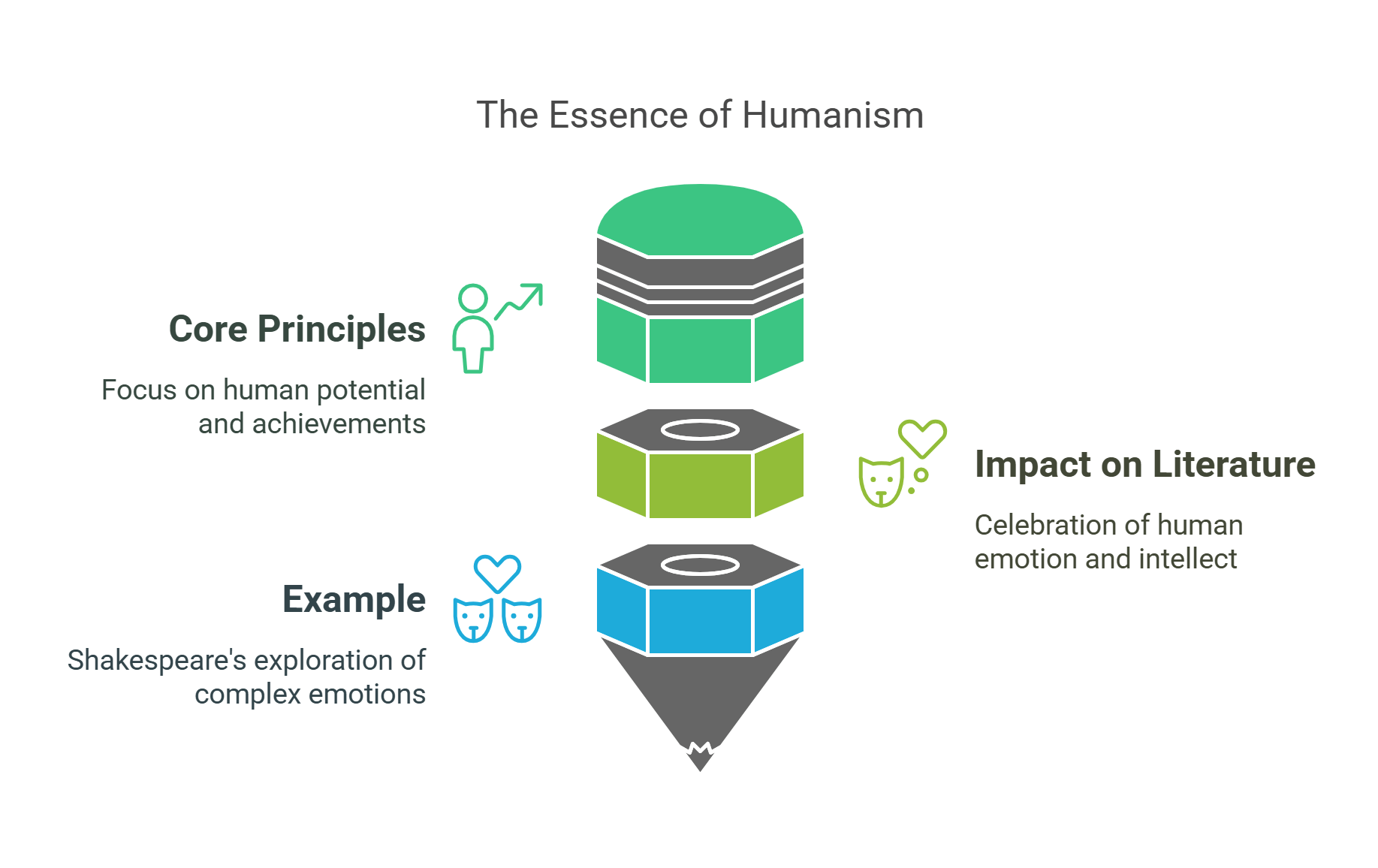
3. Key Themes in Renaissance Literature
Renaissance literature explored themes that reflected the intellectual and cultural shifts of the period.
- Individualism: Emphasis on personal identity and self-expression.
- Example: Michel de Montaigne’s “Essays” delve into personal reflections.
- Nature and Beauty: Celebration of the natural world and artistic beauty.
- Example: Edmund Spenser’s “The Faerie Queene” intertwines nature and allegory.
- Love and Emotion: Romantic and emotional exploration in poetry and drama.
- Example: Petrarch’s sonnets about unattainable love.
- Classical Influences: Revival of Greco-Roman mythology and philosophy.
- Example: Christopher Marlowe’s “Doctor Faustus” incorporates classical allusions.
Explained Simply: Renaissance themes are like a kaleidoscope of human experiences, blending old and new ideas.
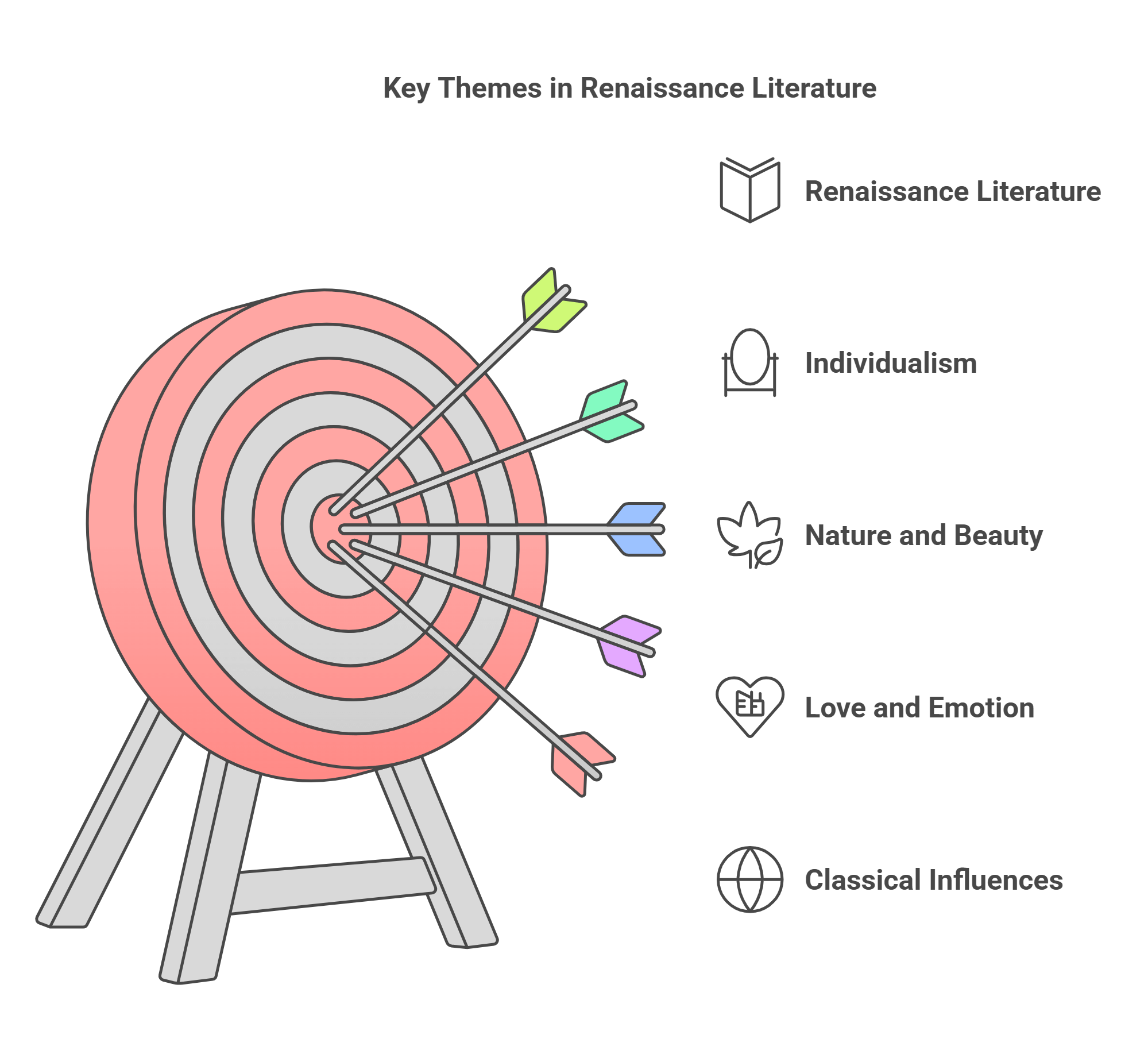
4. Major Genres of Renaissance Literature
The Renaissance gave rise to diverse literary genres, many of which reflected the era’s innovations and intellectual currents.
- Poetry: Explored themes of love, beauty, and nature.
- Example: John Donne’s metaphysical poetry combines intellect and emotion.
- Drama: Flourished in England with the works of Shakespeare and Marlowe.
- Example: “Macbeth” examines ambition and moral conflict.
- Prose: Essays and philosophical treatises gained prominence.
- Example: Montaigne’s “Essays” introduced a conversational, introspective style.
- Epic Poetry: Long, narrative works drawing on classical epics.
- Example: “The Divine Comedy” by Dante bridges medieval and Renaissance thought.
Explained Simply: Renaissance genres are like branches of a tree, each showcasing a unique aspect of the era’s creativity.
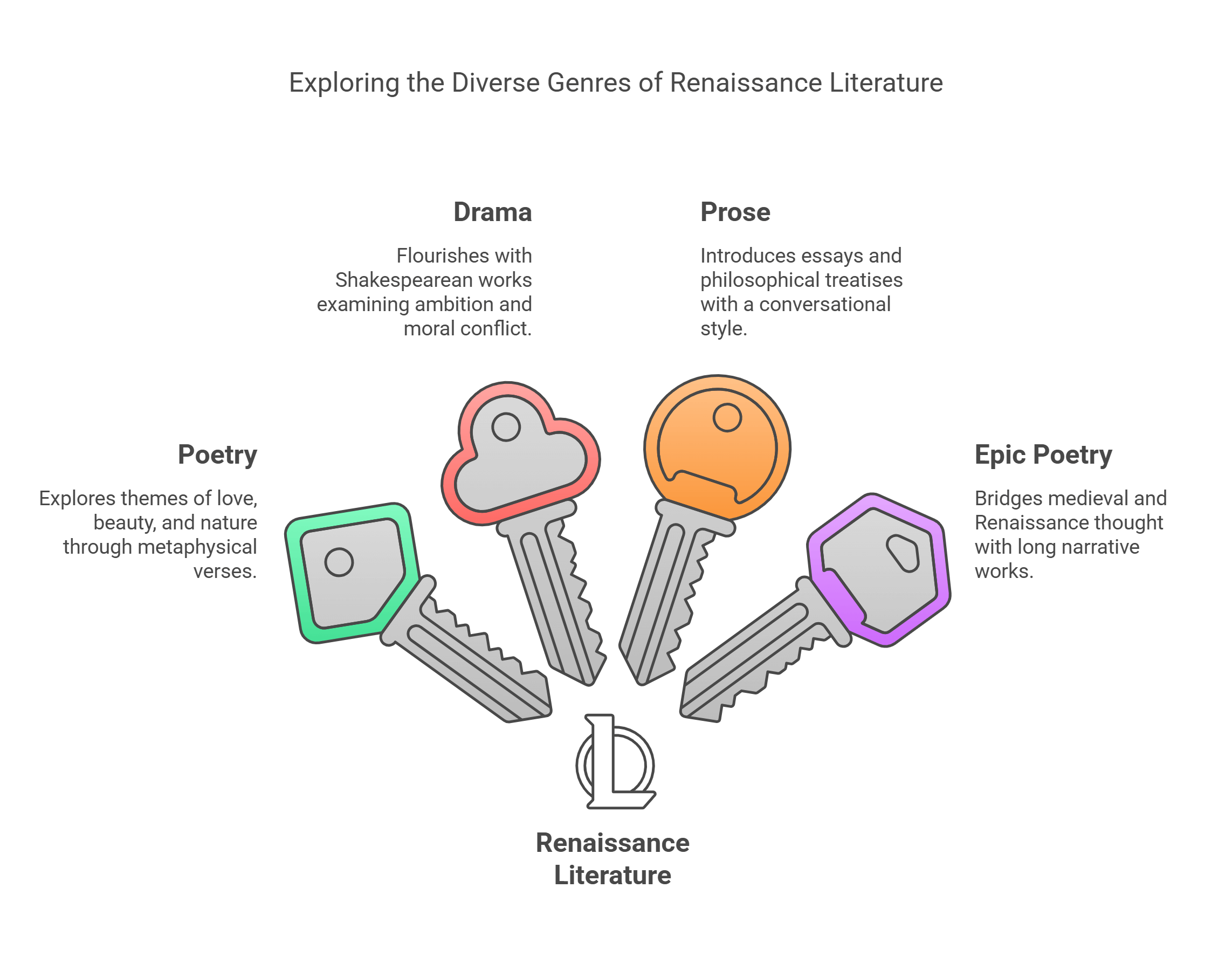
5. Iconic Authors and Works
Renaissance literature boasts a rich array of authors whose works have become timeless classics.
- Dante Alighieri:
- Work: “The Divine Comedy”
- Contribution: Merges medieval theology with humanist ideas.
- William Shakespeare:
- Work: “Hamlet,” “Romeo and Juliet”
- Contribution: Mastery of drama and exploration of universal themes.
- Miguel de Cervantes:
- Work: “Don Quixote”
- Contribution: Satirical take on chivalry and human folly.
- John Milton:
- Work: “Paradise Lost”
- Contribution: Epic poetry exploring free will and divine justice.
Explained Simply: Iconic authors of the Renaissance are like stars in a constellation, each shining with their unique brilliance.
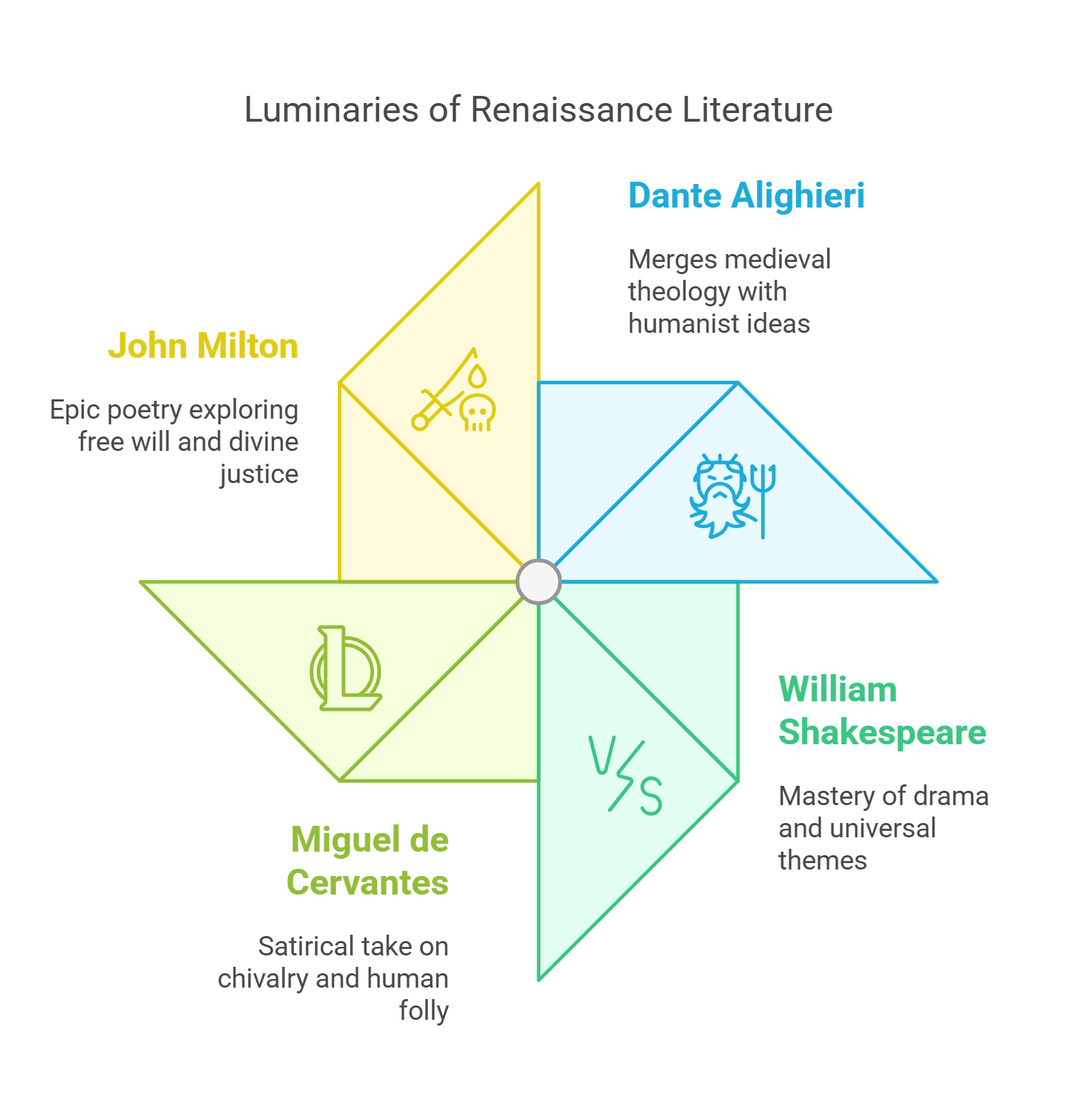
6. The Role of the Printing Press
The invention of the printing press by Johannes Gutenberg in the mid-15th century revolutionized literature by making books more accessible and affordable.
- Impact on Literature:
- Facilitated the spread of Renaissance ideas across Europe.
- Increased literacy rates as books became widely available.
- Enabled authors to reach a broader audience.
- Examples:
- Mass production of classics like the works of Virgil and Ovid.
- Dissemination of Martin Luther’s writings during the Reformation.
- Cultural Shift: Encouraged intellectual exchange and democratized knowledge.
Explained Simply: The printing press was like the internet of the Renaissance, connecting people to knowledge like never before.
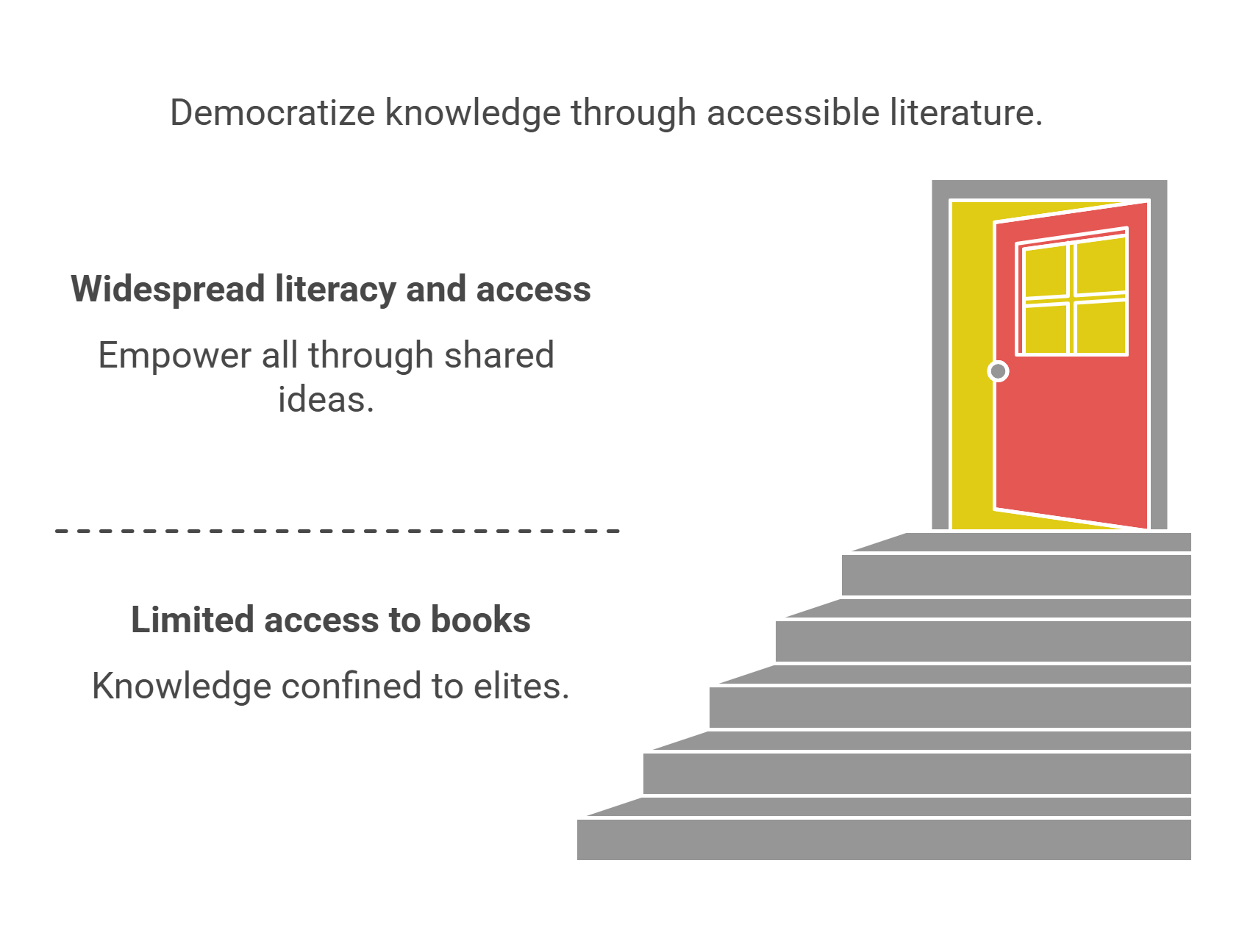
7. Renaissance Literature Across Europe
Renaissance literature developed uniquely across different European regions, influenced by local cultures and historical contexts.
- Italy:
- Focused on poetry and humanism.
- Key Figures: Petrarch, Boccaccio.
- England:
- Flourished in drama and sonnet writing.
- Key Figures: Shakespeare, Spenser.
- Spain:
- Emphasized chivalry and satire.
- Key Figures: Cervantes, Lope de Vega.
- France:
- Essays and courtly poetry.
- Key Figures: Montaigne, Rabelais.
Explained Simply: Renaissance literature was like a garden where each country cultivated its own unique blooms.
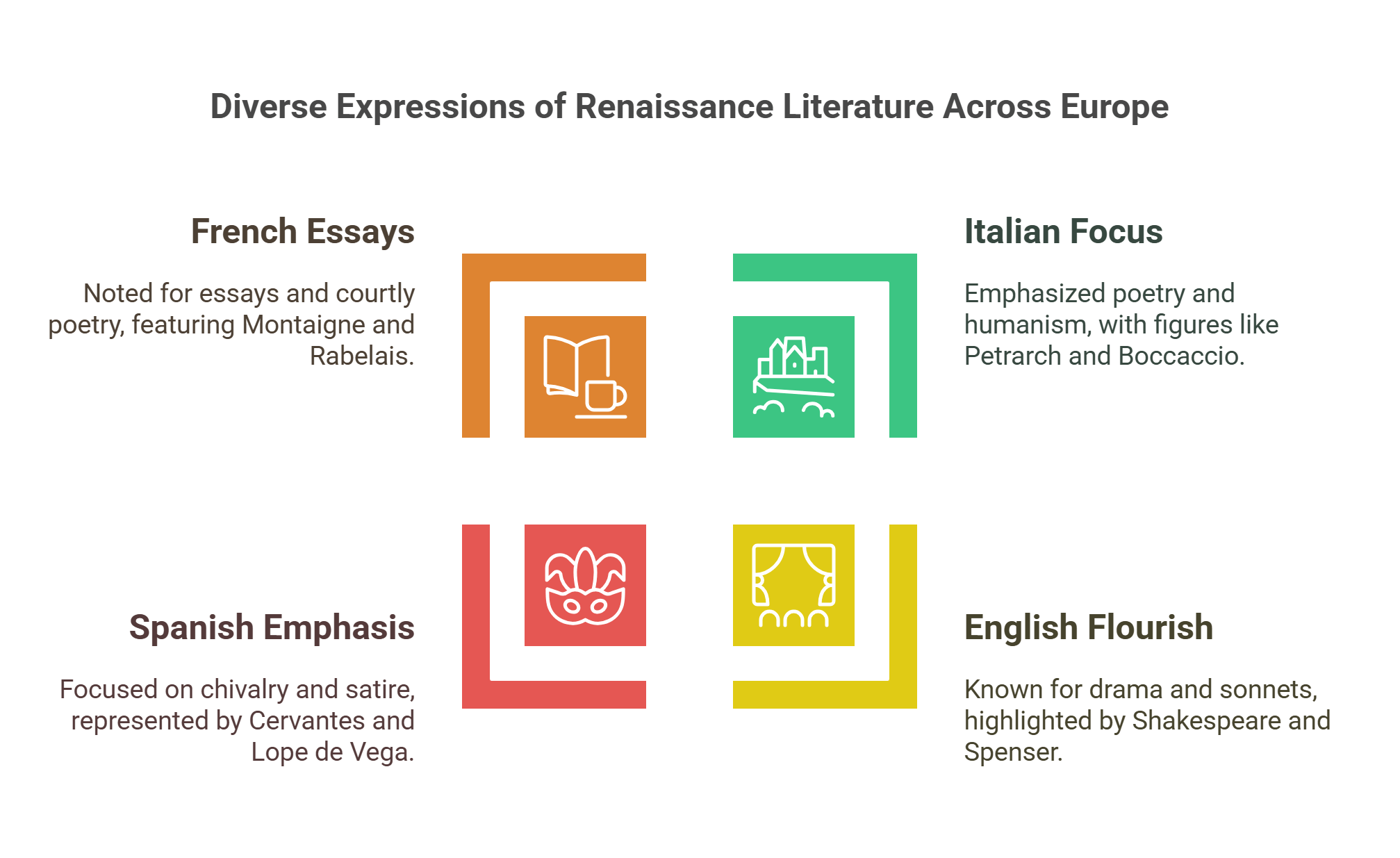
8. Influence of Classical Antiquity
Renaissance writers drew heavily on Greco-Roman texts, incorporating classical themes, styles, and philosophies into their works.
- Key Influences:
- Mythology: Inspiration for allegories and symbolism.
- Philosophy: Revival of ideas from Plato, Aristotle, and Cicero.
- Examples:
- Shakespeare’s “Julius Caesar” draws on Roman history.
- Milton’s “Paradise Lost” echoes Virgil’s “Aeneid.”
- Impact: Reinforced the importance of reason and human potential.
Explained Simply: Classical antiquity was like a treasure chest of ideas that Renaissance writers unlocked and reimagined.
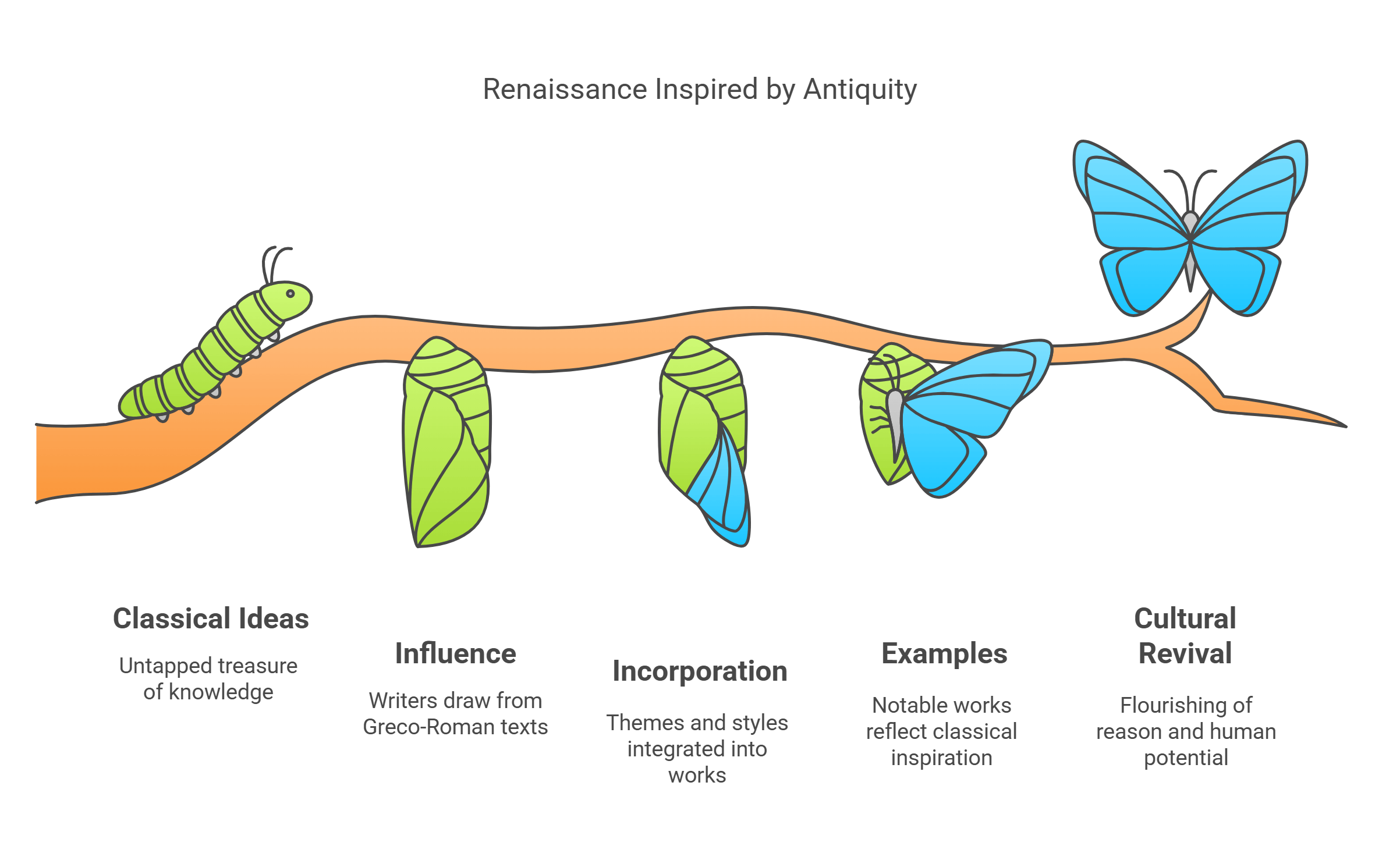
9. Religious and Political Undertones
Renaissance literature often reflected the religious and political upheavals of the time, including the Reformation and the rise of nation-states.
- Religious Themes:
- Explored moral dilemmas and human fallibility.
- Example: Milton’s “Paradise Lost” examines the conflict between divine justice and human free will.
- Political Themes:
- Addressed power, governance, and societal structures.
- Example: Machiavelli’s “The Prince” offers insights into political strategy and leadership.
Explained Simply: Religious and political undertones in Renaissance literature are like threads weaving through the fabric of human experience, reflecting the struggles of the time.
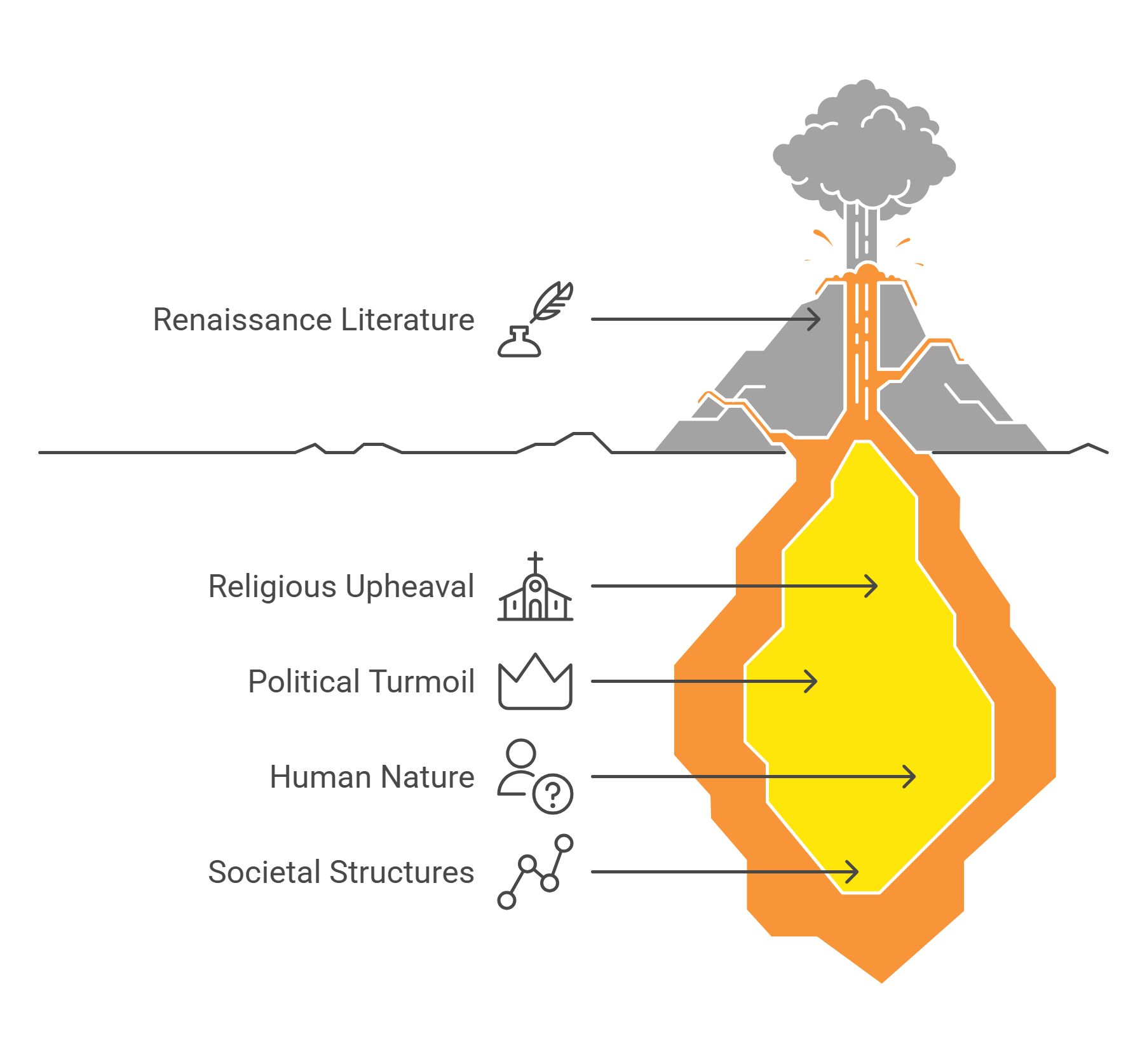
10. Legacy of Renaissance Literature
Renaissance literature laid the foundation for modern literary traditions, influencing countless generations of writers and thinkers.
- Cultural Impact:
- Established new standards for artistic and intellectual expression.
- Fostered the development of national literatures in vernacular languages.
- Inspirations for Future Movements:
- Influenced Romanticism, Enlightenment thought, and contemporary literature.
- Examples:
- Shakespeare’s works continue to be performed and studied globally.
- Themes of individualism and humanism resonate in modern storytelling.
Explained Simply: The legacy of Renaissance literature is like an echo that continues to inspire creativity and thought in every generation.
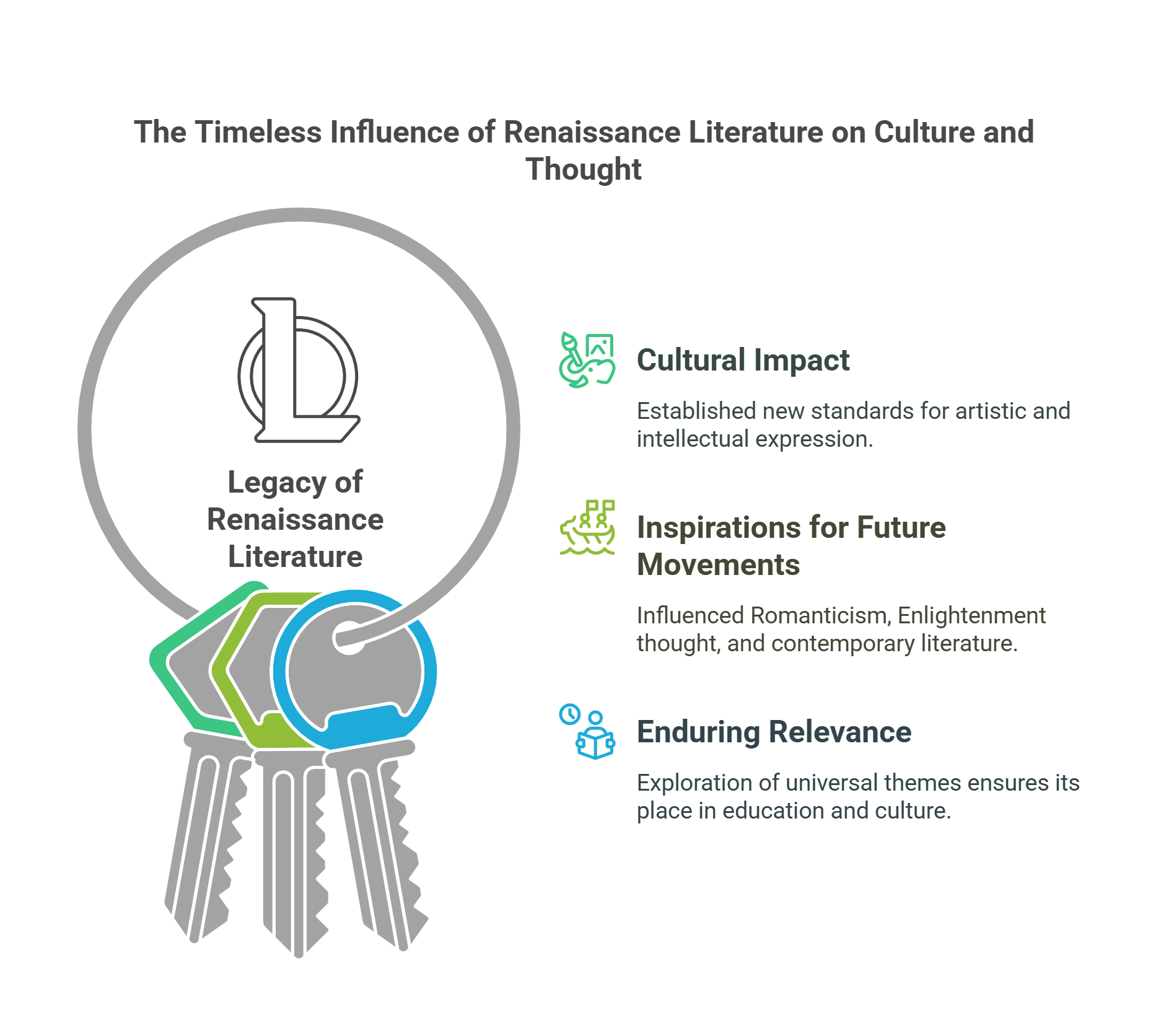
✨ Conclusion
Renaissance literature stands as a testament to the transformative power of art and intellect. By embracing humanism, celebrating individualism, and drawing inspiration from classical antiquity, it bridged the medieval and modern worlds. Understanding the key concepts, themes, and figures of this era enriches our appreciation for its enduring influence on culture and society. Whether through the timeless plays of Shakespeare or the introspective essays of Montaigne, Renaissance literature continues to illuminate the complexities of the human experience.










